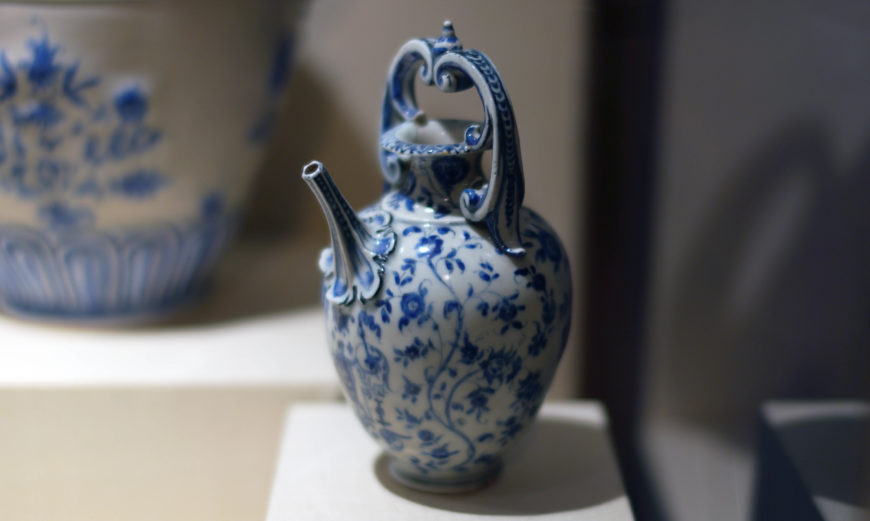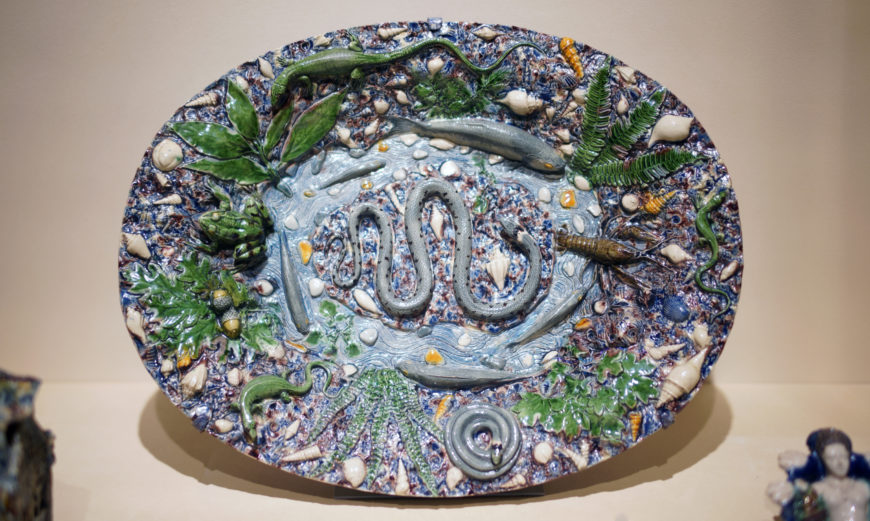A service made for Isabella d’Este, the most important female patron of the Renaissance.
A conversation between Dr. Lauren Kilroy-Ewbank and Dr. Beth Harris in front of Nicola da Urbino, armorial plate (tondino), The Story of King Midas, c. 1520–25, tin-glazed earthenware, 27.5 cm in diameter (The Metropolitan Museum of Art)





